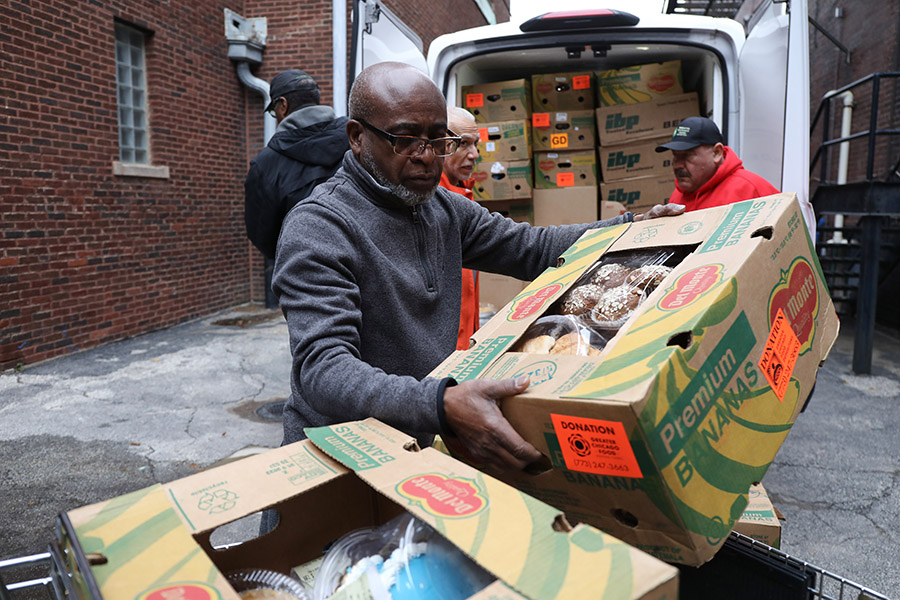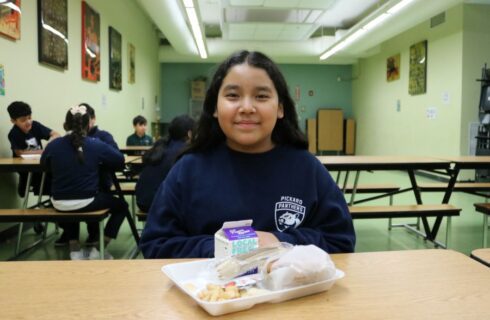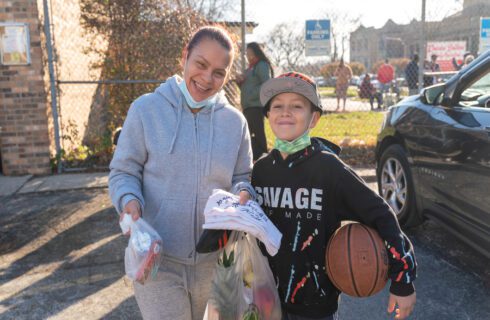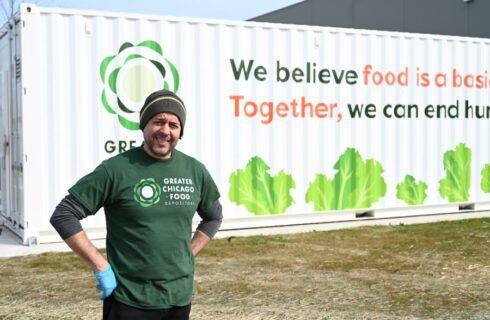It is a sobering contrast. According to the U.S. Department of Agriculture’s Household Food Security Report, more than 44 million people in the United States live in food insecure households, 13 million of whom are children.
Yet every year, while families struggle to put food on their table, we waste 80 million tons of food. According to Feeding America, 38 percent of our nation’s food supply ends up in a landfill or an incinerator.
The Natural Resources Defense Council asserts that the U.S. could feed every food insecure person with just one-third of the food that is wasted each year.
Food banks across the country don’t take statistics like these lightly. For years, we have collected surplus, fresh and edible food from restaurants and food retailers to distribute to families and individuals facing food insecurity through local pantries and other community meal programs.
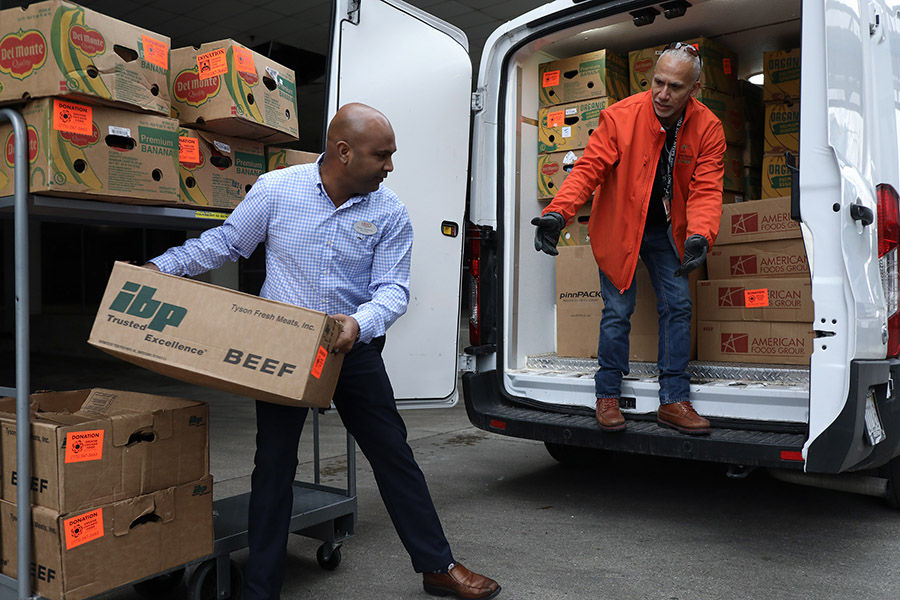
Above and Beyond's Javi Rodriguez loads up the pantry's new van with rescued food from Jewel-Osco. Photos by Abel Uribe for the Food Depository.
The practice, known as “food rescue” or “food recovery,” provides a crucial emergency food resource while at the same time reducing food waste. The Greater Chicago Food Depository has been rescuing food for our neighbors across Chicago and Cook County since 1986. In 2023, we took the program further, effectively transforming the way we recover edible, unsold food from local grocers.
“Hub and spoke” collaborations
Recognizing that pantry partners have varied capabilities and resources, we introduced a “hub and spoke” model whereby a partner pantry (the hub) collects food from local grocers for themselves and for other food pantries in the neighborhood (the spokes).
To facilitate the collections, the Food Depository provides “hub” partners with a grant to purchase or retrofit a refrigerated vehicle. We also connect our network pantry partners with nearby food retailers, creating strong partnerships that empower local collaboration to address food insecurity, especially in high-need communities.
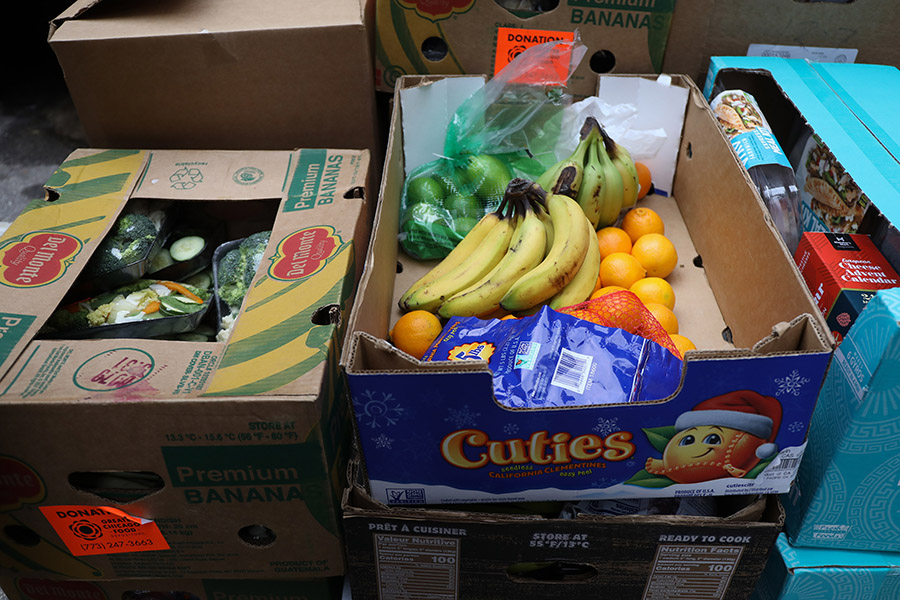
Our partners rescue quality, unsold food from local stores, including produce and protein.
The collaborative arrangement maximizes resources, supports smaller pantries and reduces food waste. And while some food banks in the country have adopted a “hub and spoke” approach to food rescue, the Food Depository is the first to combine the model with capacity-building grants and support with facilitating community partnerships. The program also exemplifies our work to address the root causes of hunger by directing nutritious food to areas that need it most.
Since incorporating the “hub and spoke” model, the Food Depository and our partner network have increased the amount of food rescued by 30 percent – all of which is redistributed into the community for local families. We currently have 18 “hub and spoke” collaborations serving 38 neighborhoods. Many are in historically disinvested communities with limited access to affordable, nutritious food.
More food for more neighbors
“Food insecurity is definitely still widespread throughout a lot of our communities,” said Ken Cozzi, executive director of Above and Beyond Food Pantry, which serves neighbors in West Garfield Park. Since the pantry opened in 2021, they have seen a steady increase in pantry guests. “There’s always going to be a need. And we want to be able to provide the community with (food).
That’s why, when the opportunity arose to become a Food Depository Community Food Rescue “hub” partner, Cozzi jumped at the chance. He saw it as another way to get additional fresh and shelf-stable food for his growing pantry.
“We try to offer a lot of fresh produce and fresh foods, and bring in protein such as meat, chicken, fish and eggs. It’s what people want,” Cozzi said.
The Food Depository connected Cozzi’s pantry with several nearby retailers, including Jewel-Osco, Target, Aldi and Sam’s Club to rescue food.
“For whatever reason (some food) remains unsold. It could just be a change in packaging or a different SKU (Stock Keeping Unit) number. Instead of discarding the items – which doesn’t make sense to us – we pick them up for our guests and two other neighboring pantries. The two we work with are smaller and they’re not open as often as we are, but that doesn’t mean that the need isn’t there,” explained Cozzi.
A plus for guests and drivers
Brian Carroll values the help he gets from Above and Beyond. As a single dad, he does his best to support his family on a fixed income. “I’m not working right now as I’m dealing with some mental health issues,” he said. “Food stamps run out on the 9th (of every month), but there’s still more month left,” he said. That’s when he visits Above and Beyond.
“Stuff like this helps,” he said, holding up bags of groceries from the pantry.
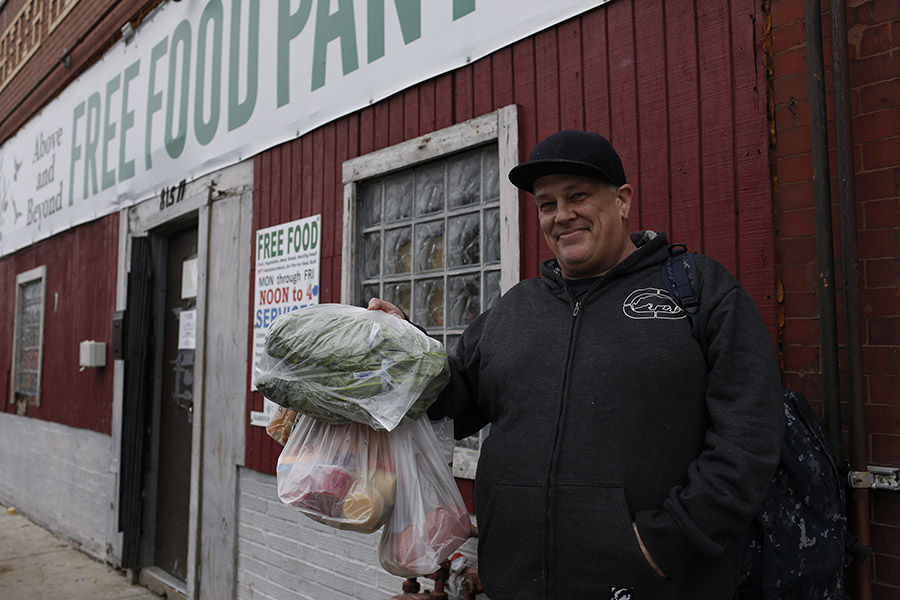
Brian Carroll is grateful for the food he receives from Above and Beyond pantry.
Previously, Food Depository drivers collected rescued food from partner restaurants and grocery stores. Sometimes, the items were delivered directly to a pantry. Most of the time, they were brought back to the Food Depository’s warehouse and stored temporarily until pantry partners were able to receive the deliveries.
Empowering pantries to conduct their own food rescue cuts down on unnecessary transportation time, freeing up drivers for other assignments. The model also ensures food products remain fresh.
“At the Food Depository, we are constantly thinking of ways to improve processes and systems," said Joe Rodriguez, vice president of transportation, warehousing and facilities management.
"Just because we’ve been doing food rescue a certain way for years, we are not too proud to admit when operations need to be adjusted for efficiency and maximum impact. It’s what our neighbors and supporters deserve.”
Pantry guests like Teresa Wilson and husband Lamont Wilson are certainly grateful. Even though they both work, they barely earn enough to get by. The couple really felt the pinch last March when their extra pandemic-era SNAP (Supplemental Nutrition Assistance Program) benefits were reduced.
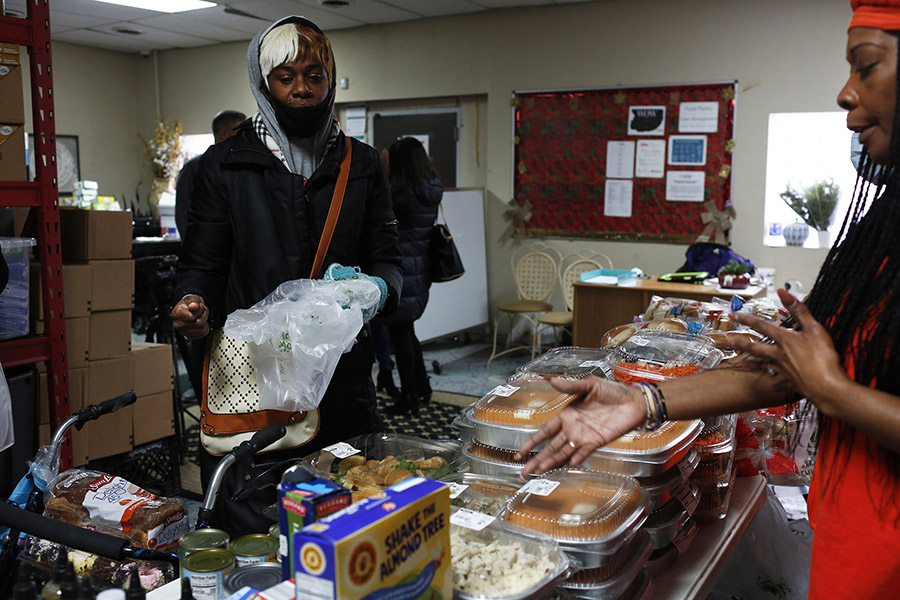
Pantry guest Dawanna Johnson appreciates the extra variety the rescued food provides.
“We have 11 grandkids. I’ve put off buying work pants because we want to have food for them when they visit,” said Teresa.
And thanks to innovative programs like Community Food Rescue that provide the necessary resources and relationships to increase food supplies, pantries will remain a reliable lifeline for neighbors like the Wilsons.
Share This Post

